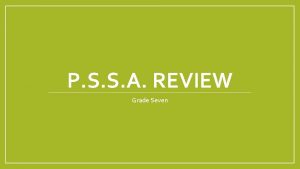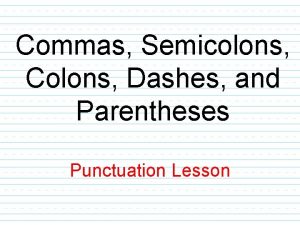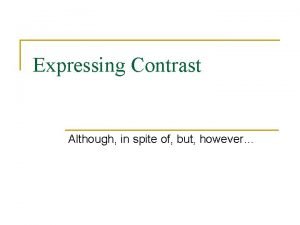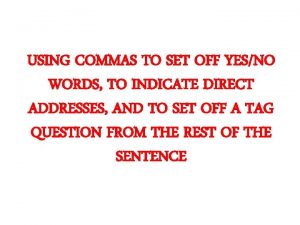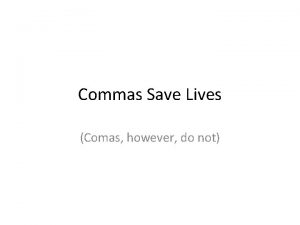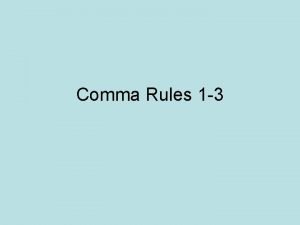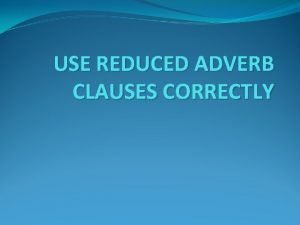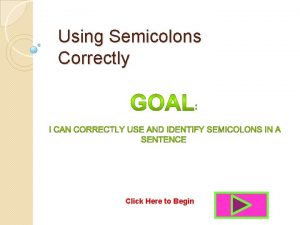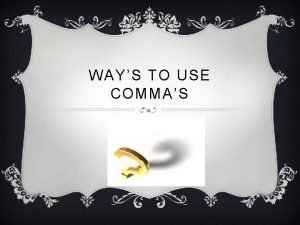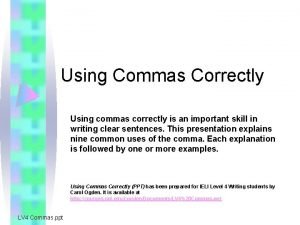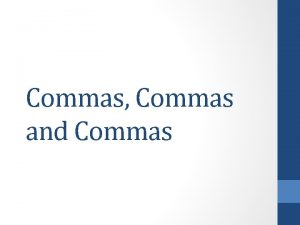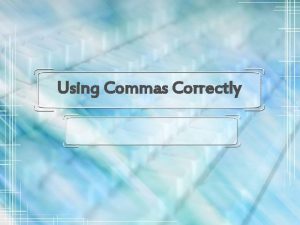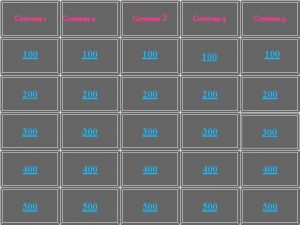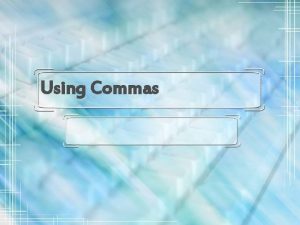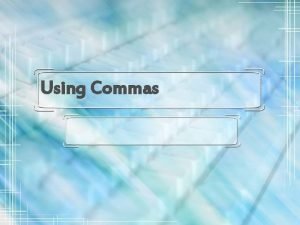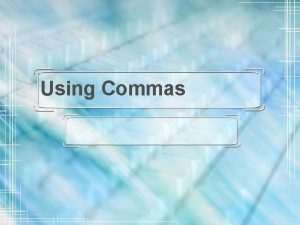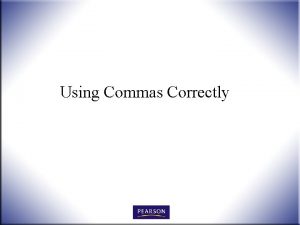Commas HOW TO USE COMMAS CORRECTLY HOW TO









- Slides: 9

Commas • HOW TO USE COMMAS CORRECTLY • HOW TO AVOID COMMA SPLICES • & • FUSED (RUN-ON) SENTENCES • USING SEMICOLONS • USING COLONS

Commas Matter!

When to Use Commas �Before a conjunction (and, but, for, nor, so, yet) that joins two independent clauses: I’d like to visit the mall, but let’s go to lunch first. �After an introductory phrase: After lunch, I’d like to visit the mall. �After a transitional word or phrase: First, we’ll go to lunch. Next, we’ll go to the mall. �To separate elements in a list: I want to visit Italy, France, and Spain.

Commas set off Nonessential Clauses �When there is a single entity that you could be referring to, you need to set off nonessential information about that entity: I’d like to visit my grandma, Helen. This sentence tells the reader that you have only one grandmother, and her name is Helen. �When there is a more than one entity to which you could be referring, its identity is essential information about that entity, and it does not get set off by a comma: I’d like to visit my grandma Helen. This sentence tells the reader that you have more than one grandmother, but the one you want to visit is Helen.

So as an explanation �In some sentences, the word so is used to introduce an explanation for the behavior that occurred prior to the word so: We ate quickly so (that) we would not be late for the movie. She worked late so (that) she could finish the assignment before the deadline. �In these cases, so is not introducing an independent clause; the explanation that follows is a dependent clause. The word that in parentheses is added to help you distinguish when a comma is and is not required before so.

Comma Splices �A comma splice incorrectly joins two main (i. e. , independent) clauses with a comma. Incorrect: I like going to the mall, we are having lunch first. �One way this error can be corrected by adding a coordinating conjunction: Correct: I like going to the mall, but we are having lunch first.

Fused Sentences (Run-on) �A fused sentence contains two main clauses with no punctuation: Incorrect: I like going to the mall we are having lunch first. �When used correctly, commas (among other forms of punctuation) can fix a fused, or run-on, sentence. Correct: I like going to the mall, but we are having lunch first.

How to Use Semicolons �To link two independent clauses to connect closely related ideas: I would like to visit Paris; my sister would rather visit Spain. �To link clauses connected by a conjunctive adverbs or transitional phrase: I would like to visit Paris; however, my sister would rather visit Spain.

How to Use Colons �Use colons between a grammatically complete introductory clause and a final clause that extends the preceding thought. o She enjoyed many types of music: jazz, pop, and country. �If the clause following the colon is a complete sentence, it begins with a capital letter. o The researchers agreed: The participants were drowsy after taking the experimental drug.

